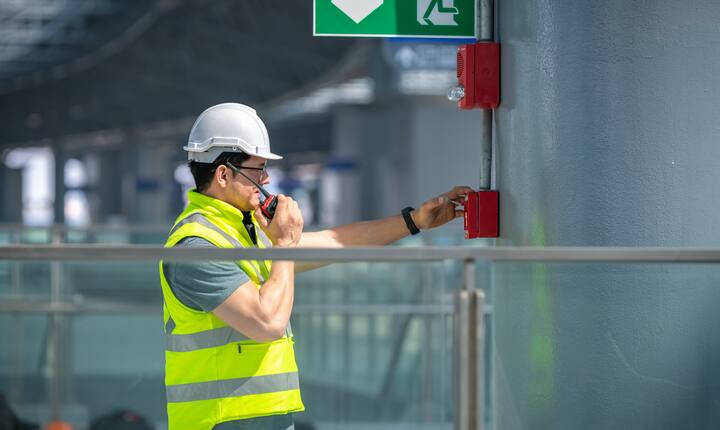
‘s-Hertogenbosch Netherlands
FAQ

FAQ
All the most frequently asked questions
First of all, make sure that all necessary documents are provided in a timely manner: certificate, baseline document, logbook, report of completion or report of maintenance, maintenance contract, any permit from the competent authority and an up-to-date detailed design (drawings and calculations). But the documents must also be available to the inspector during the on-site inspection.
If a discrepancy is found during an inspection, it is noted in the inspection report. In this case, no inspection certificate can be issued. The client is given time to correct the discrepancy. A re-inspection will then assess whether everything is now in order.
The frequency of inspection is set by regulations (the Building Code) and rules (such as PGS 15) from the government.
An inspector inspects whether the intended fire safety is met. This begins with a review of the basic and detailed design, followed by an on-site inspection. Read more about our methods.
Where a maintenance company looks only at the technical operation of the fire protection system, an inspector looks at the complete picture. Are all the systems working properly together? Are the structural provisions in order? And are the organizational measures correct? This gives more assurance about the operation of the fire safety system in practice. Annual inspections thus further reduce the risks. The inspection looks at the installation, the associated structural provisions and organizational measures. Together, they ensure a fire-safe building. Is everything in order? Then the inspection certificate is issued. This is an important document for the insurer.
An installer can issue an installation certificate, demonstrating that the technical aspects of the installation are in order. However, the installation certificate only looks at whether the installation does what it is supposed to do, but not at the connection with architectural and organizational aspects.
A fire protection system is approved after completion with an installation certificate. This certificate is valid for one year and must be renewed with annual maintenance by a maintenance company. Is the installation still in working order? Then a maintenance certificate is issued.
An inspection certificate shows that the fire protection system is suitable in the context in which it is placed and is required by the 2012 Building Code. It can only be issued after approval by an inspection body. An inspection body authorized to issue an inspection certificate must be a type A accredited inspection body that complies with EN ISO/IEC 17020.